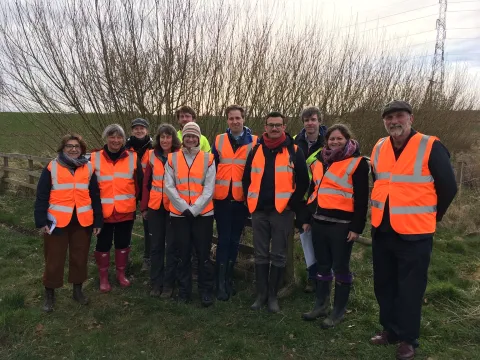
The purpose of the meeting was to share information on policy developments; to raise awareness of relevant, underpinning work with the Strategic Research Programme, and; to identify cross-
organisational priorities for CREW projects in 2019-20. The meeting was attended by representatives of the Scottish Government, the Scottish Environmental Protection Agency (SEPA), Scottish Natural
Heritage (SNH), Biomathematics & Statistics Scotland (BioSS), Scotland’s Centre of Expertise on Climate Change (CXC) and the James Hutton Institute. The meeting started off with a roundtable discussion on policy developments and new CREW project ideas under the Flooding and Coastal Erosion theme. Updates were then provided for four current CREW projects.
Nikki Dodd from CREW presented the second-year findings of the impacts of the winter 2015/2016 flooding project on the communities of Ballater and Garioch on behalf of Lorna Philip (University of Aberdeen) and Mags Currie (James Hutton Institute). The report details recommendations made by affected individuals about insurance, personal wellbeing, resilience, and preparedness, improved communication between key institutions and by such institutions with the communities, and increased community resilience and sociality. The subsequent presentation provided an update on the work of Clare Rowland, Paul Scholefield, Aneurin O’Neil and James Miller (Centre for Ecology and Hydrology), in mapping the spatial extent and rate at which urban creep has affected the city of Edinburgh. The team have identified ‘paving over’ of the equivalent of 9 football pitches of vegetated land per year between 1990 and 2015, giving way to parking space or housing developments. This reduction in soil permeability exacerbates run-off which proves a heavy burden on urban drainage systems and, crucially, resilience to floods in an increasingly unpredictable and volatile climate.
Mark Wilkinson, Flood Risk Management Scientist at the James Hutton Institute, presented a project looking into public perceptions of Natural Flood Management at the community level. Results from initial focus group interviews in Menstries, Aviemore, and Peterculter indicate general support for Natural Flood Management (NFM), while also showing a sense that responsible agencies could engage more effectively and consistently around flood risk management. The final presentation described how evidence has been collected on prevention-led approaches within catchments designed to safeguard drinking water. The project team identified a long list of cases internationally, reviewed current best practice in four selected cases and hosted a workshop with policy makers and representatives from the case sites. A final project report is currently being produced.
In the second part of the meeting, Marc Stutter from the James Hutton Institute gave a general update on the Strategic Research Programme [SRP] before BioSS and James Hutton Institute staff gave an overview of project status and recent developments in different work packages of the SRP. The first set of presentations focused on studies around water resources and flood risk management, while the second set discussed projects that deal with integrated and sustainable management of natural assets.
After these presentations, participants travelled to nearby Balruddery Farm to view and discuss water management and other measures adopted there. Balruddery Farm is owned and managed by the James Hutton Institute and is the site of the Centre for Sustainable Cropping Platform. The farm platform is the first of its scale in the UK and provides an open research facility to test and demonstrate the economic, ecological and environmental trade-offs in sustainable land management over many decades.